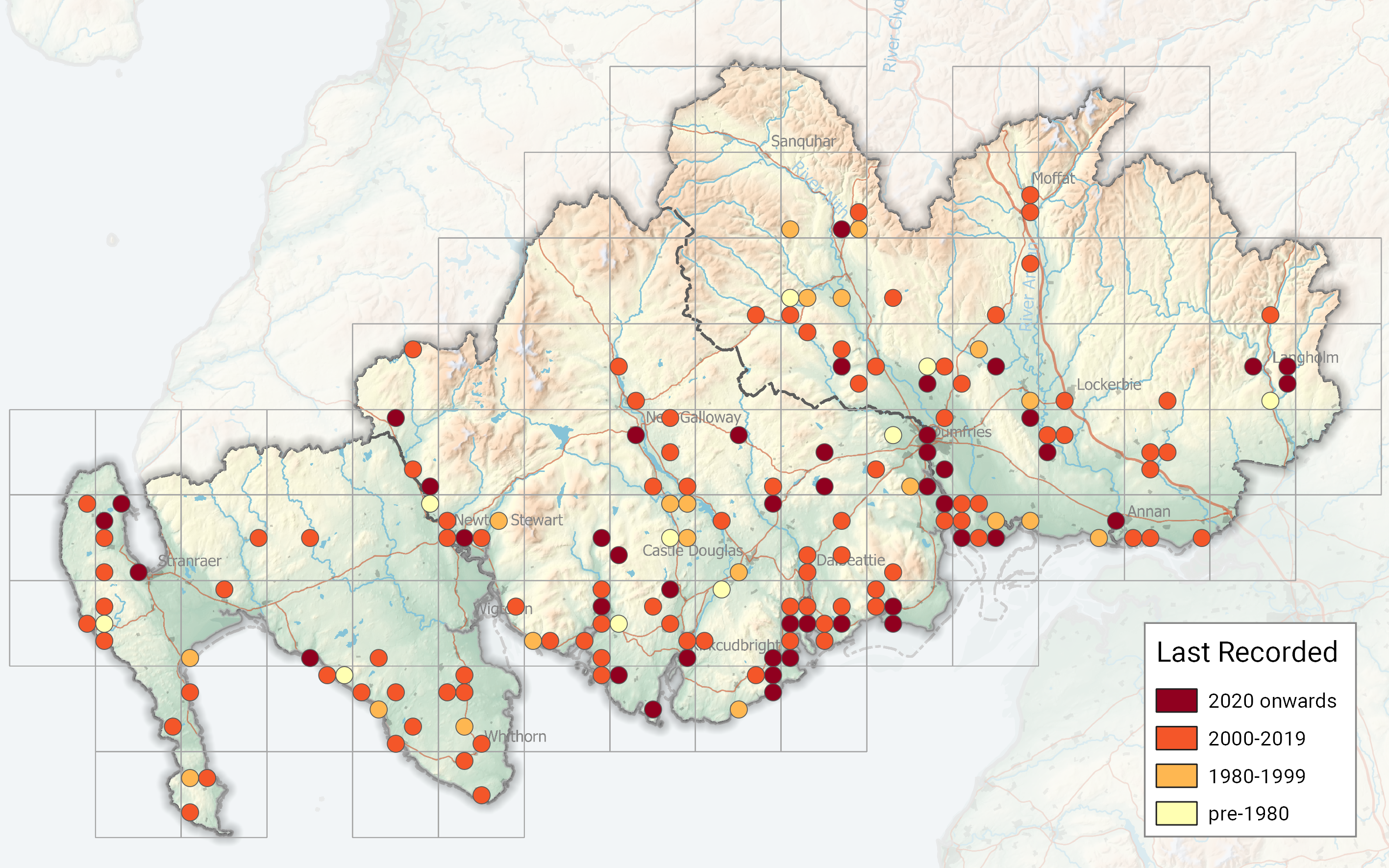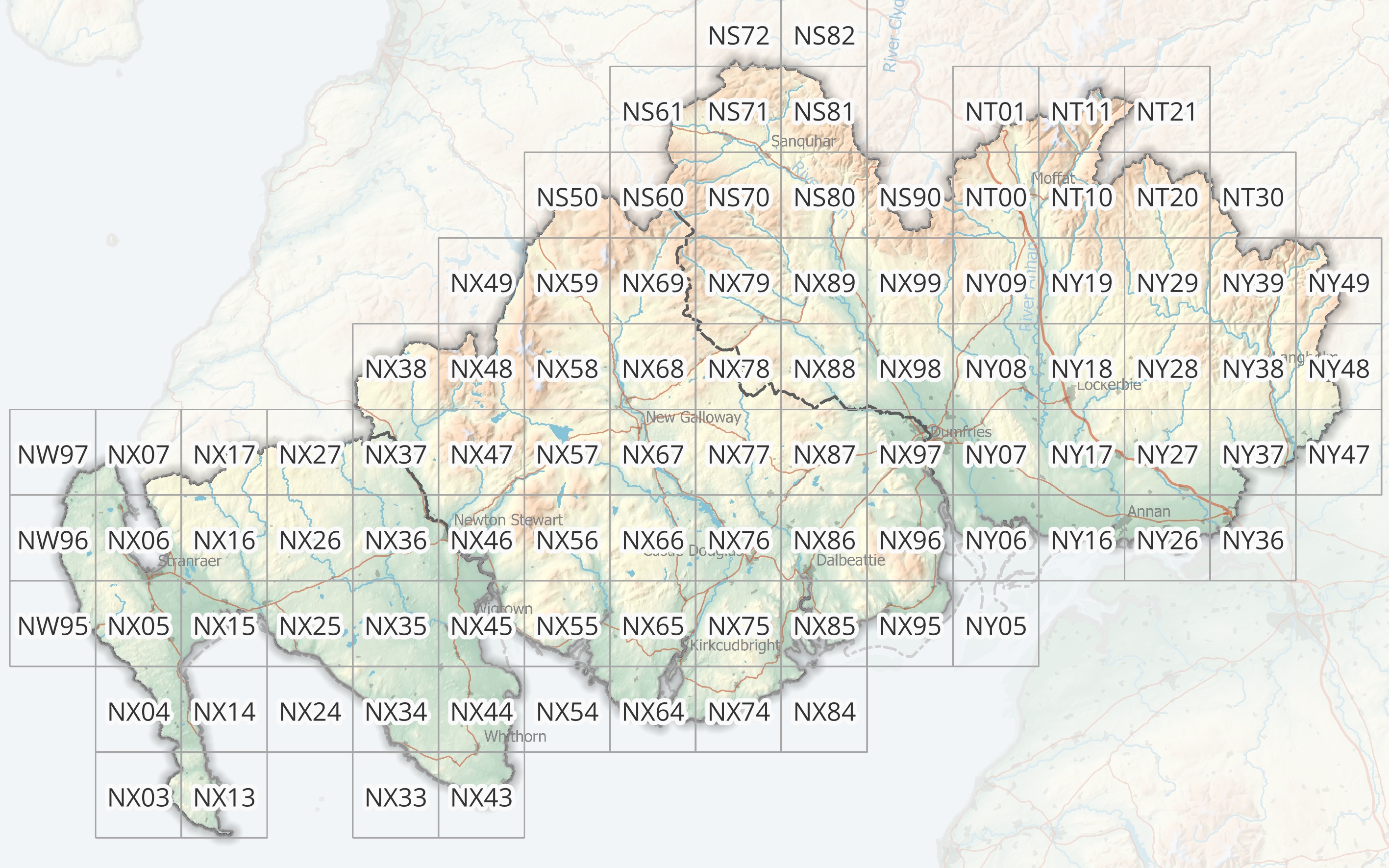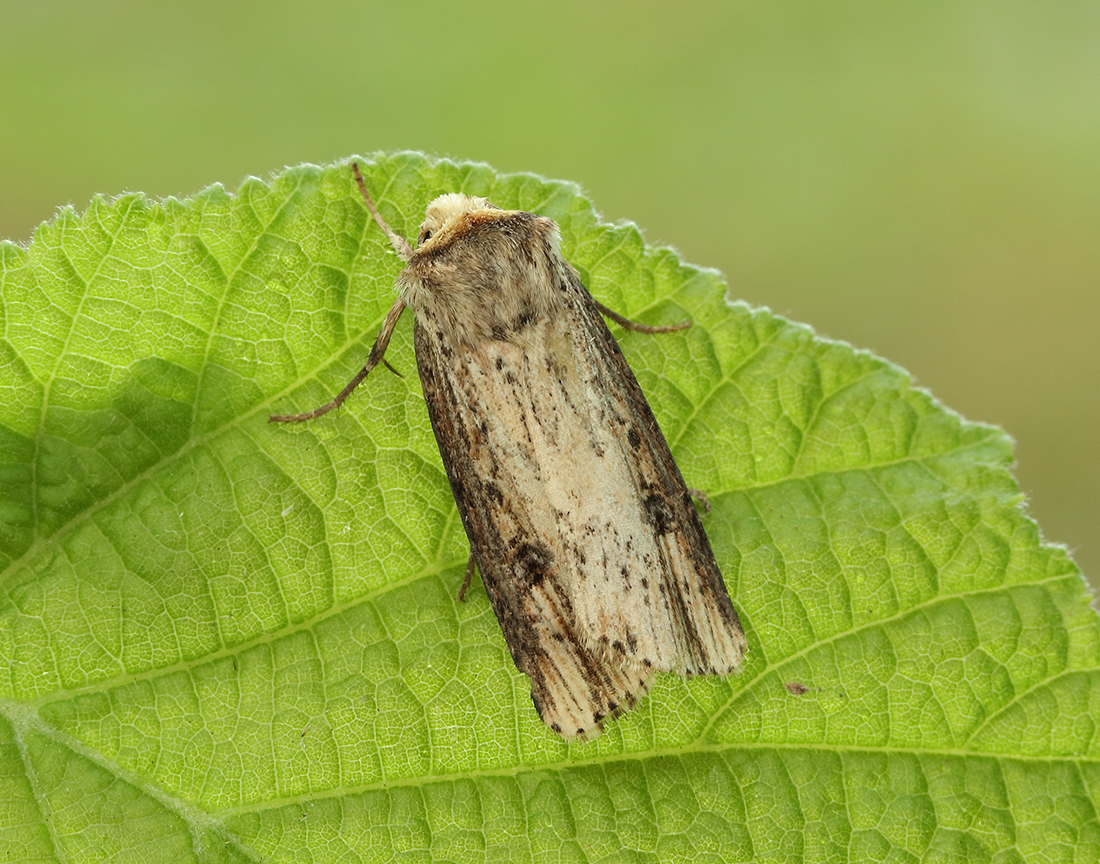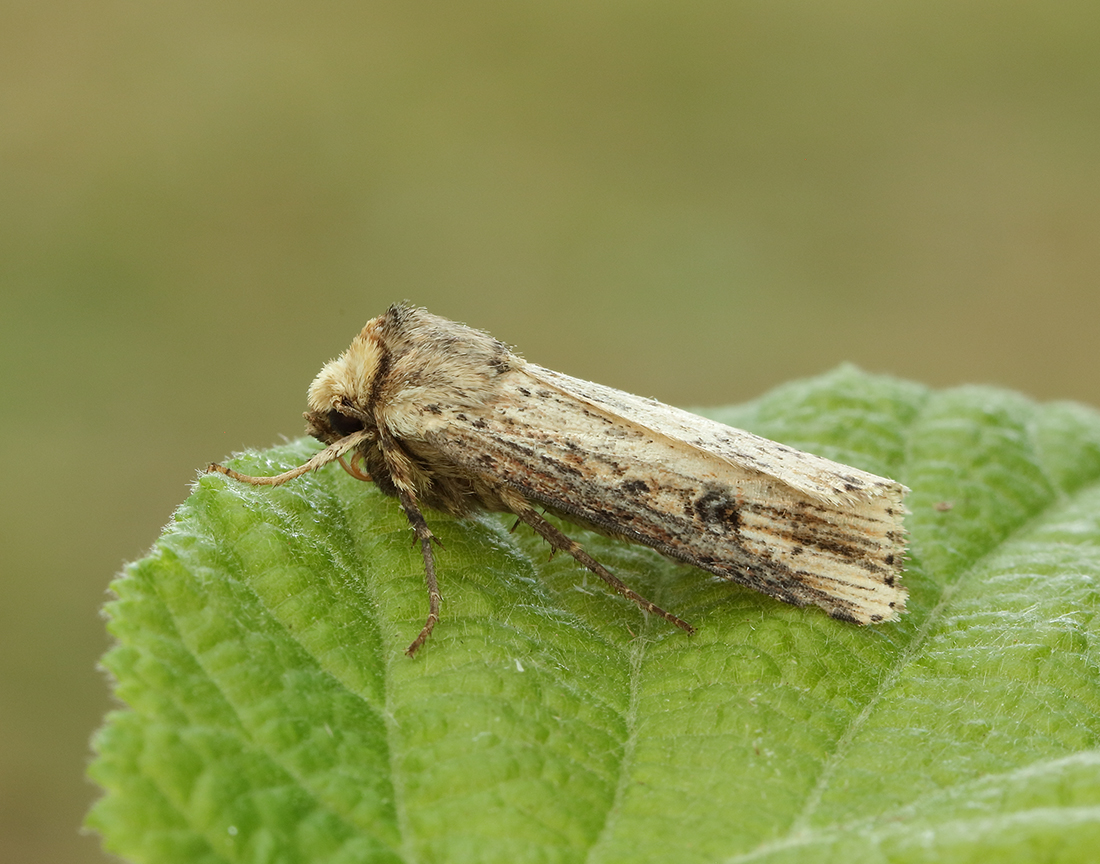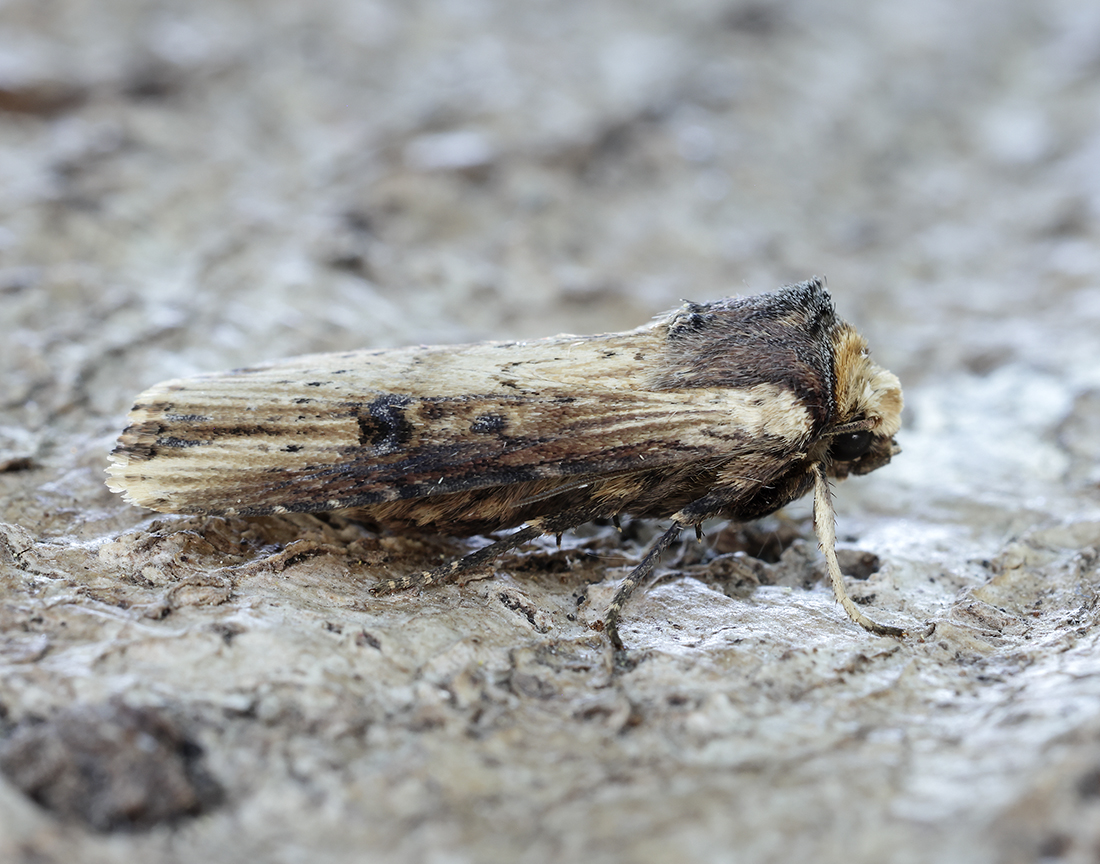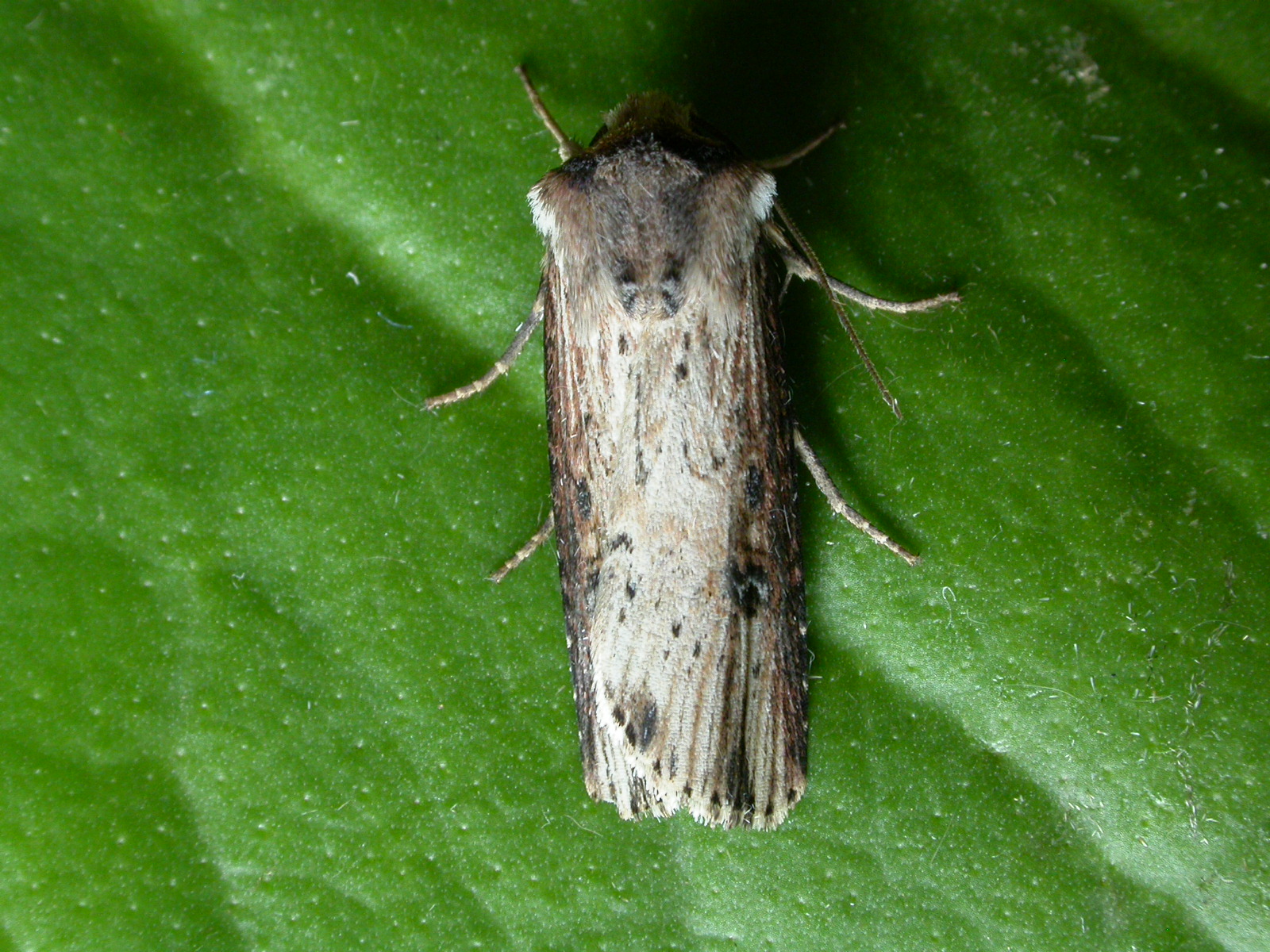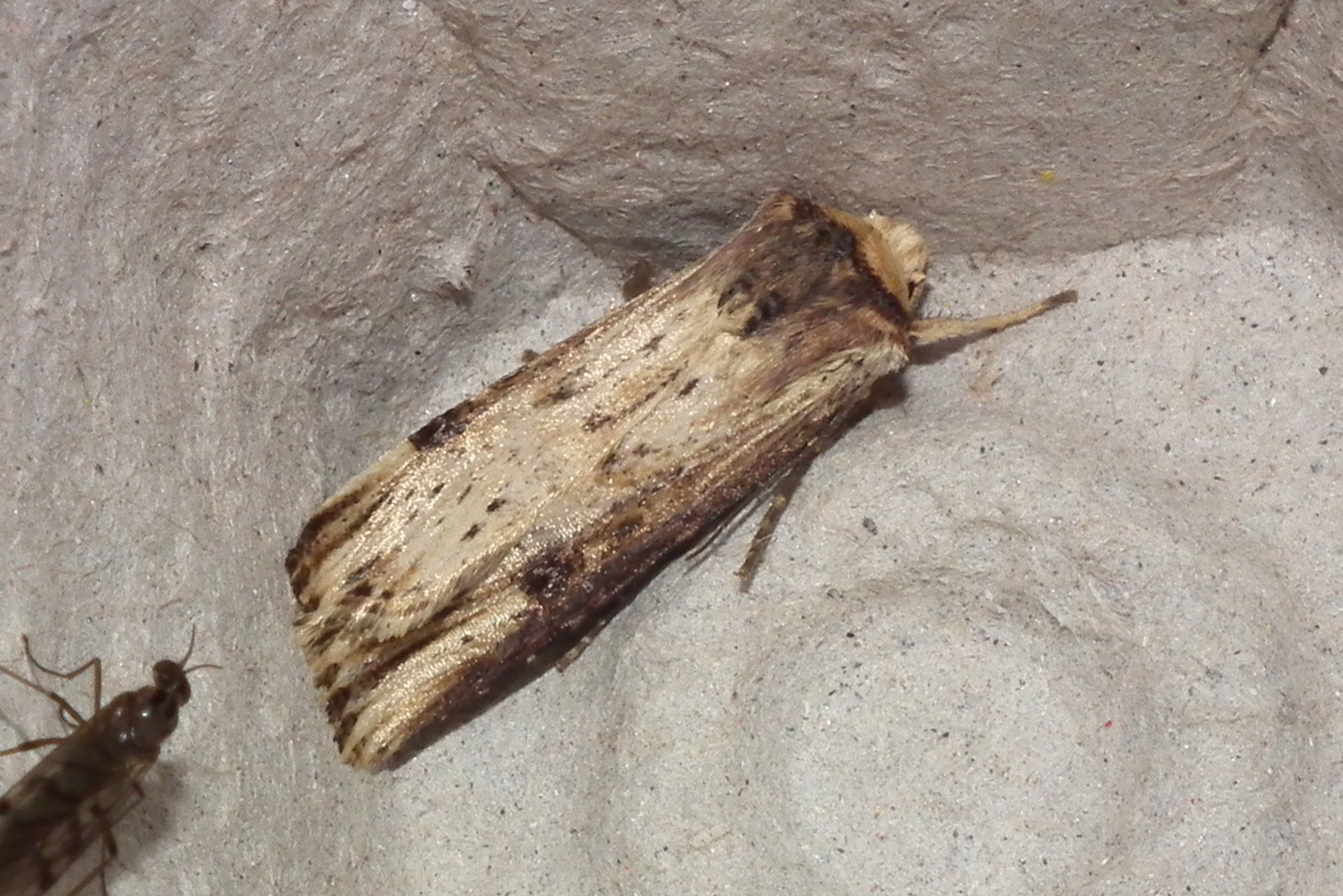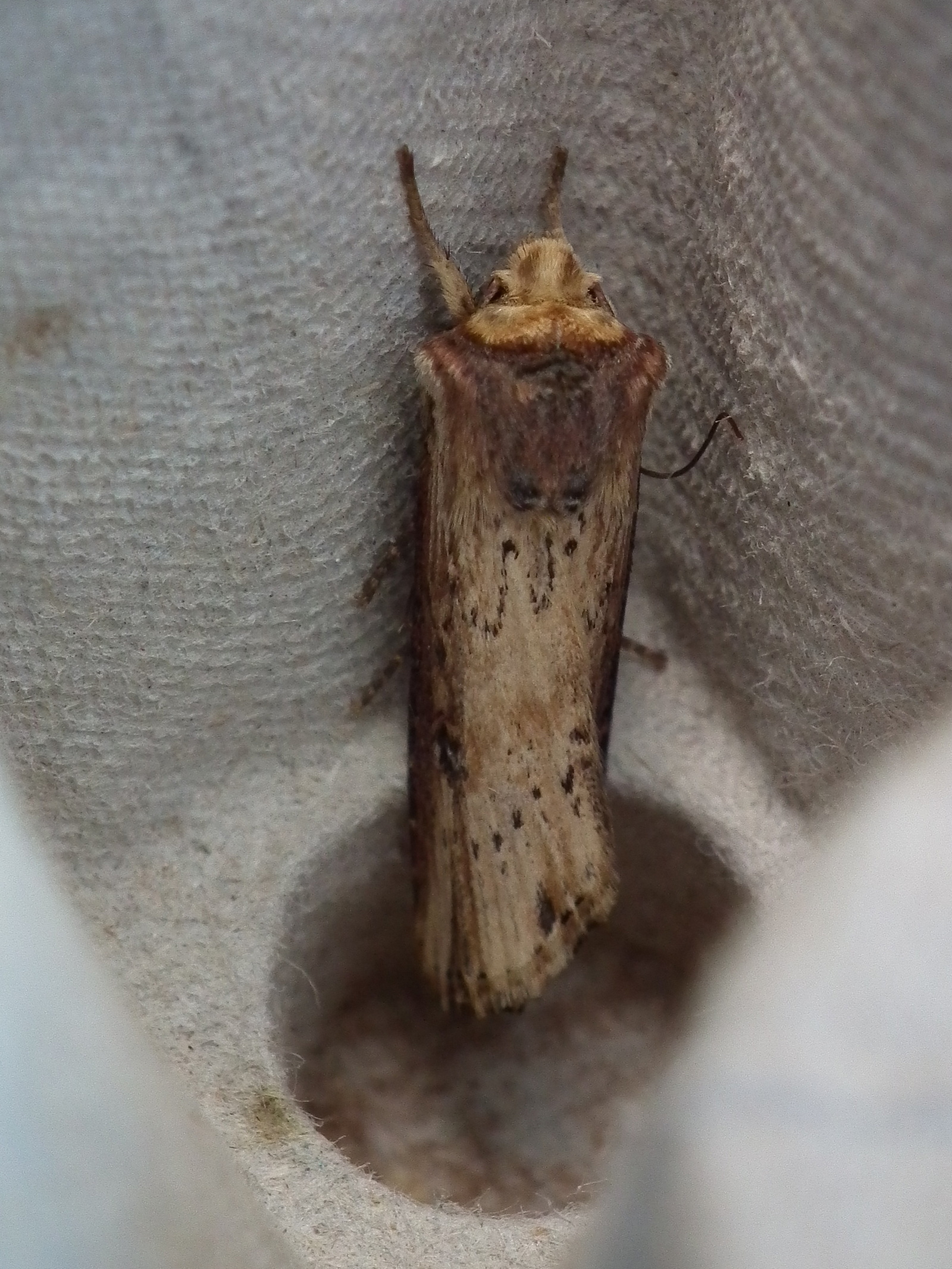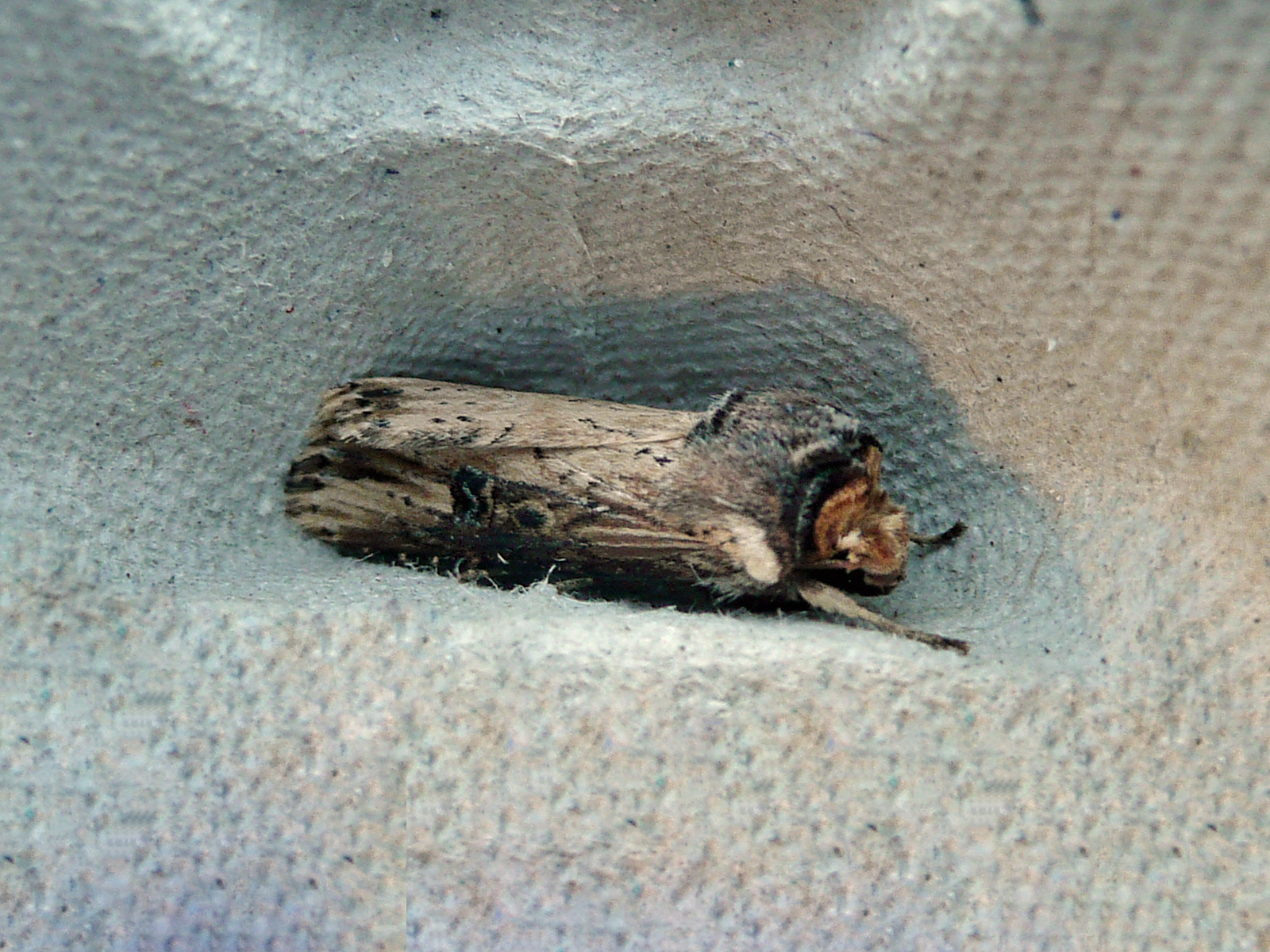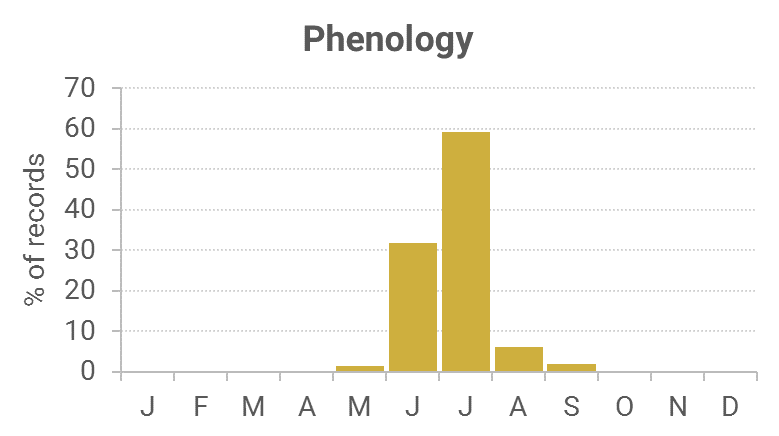Identification
Dark streak along the costa with a dark kidney-mark on a straw-coloured forewing
Recording Method.
Attracted to light, also comes to sugar and flowers.
Life cycle
Two generations. Overwinters as a pupa. Larvae present July to October, feeding by night, with pupation underground.
Larval foodplants
A wide variety of low-growing plants, including nettles and Hedge Bedstraw.
Habitat
A wide variety of different habitats.
History
Lennon (1863) stated that it was rather common and that it had occurred at Terregles (VC72). Several larvae taken by J. Garraway on nettle and dock at Alticry Glen, Luce Bay (VC74), were bred on in July 1902 (Gordon 1913). Sir Arthur Duncan (1909-84) during his lifetime had found it at Closeburn, Tynron and Castlehill, Dumfries (all VC72).
During 1974-93 it was regularly recorded from all seven Rothamsted stations, with other records in that period from the Hensol Estate. From 1992 to 2010, the regular trapped sites at Kirkton, Durisdeer (VC72), Cally Woods, Old Torr and Kirkcudbright (VC73), and Forest Moor in Wigtownshire have proved this to be a widespread common moth.

